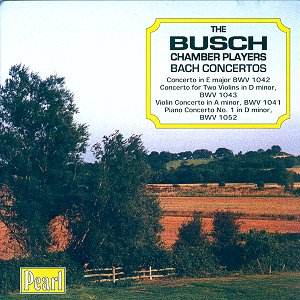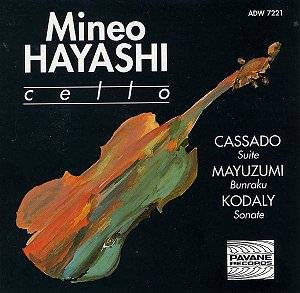 Composer: J. S. Bach
Composer: J. S. Bach
Works: Violin Concerto BWV 1042, Concerto for Two Violins BWV 1043, Violin Concerto BWV 1041, Piano Concerto No. 1 BWV 1052
Performers: Adolf Busch, violin and director; Eugene Istomin, piano; Frances Magnes, violin; Busch Chamber Players
Recording: Recorded New York 1942-1945
Label: Pearl GEMM CD 9298
Johann Sebastian Bach’s concertos represent a pinnacle of the Baroque idiom, bridging the rich polyphonies of the era with the emerging clarity of the Classical style. The collection presented here features works that not only highlight Bach’s virtuosic demands on string instruments but also encapsulate the expressive potential of the concerto form. Adolf Busch, a violinist of considerable repute, and his collaborators provide a window into a vibrant period of American musical history, capturing the essence of Bach’s music during the 1940s amidst the tumult of World War II.
In the Violin Concerto in E major, BWV 1042, the recording reveals Busch’s interpretative choices that lean towards an emphatic expressivity. The opening movement unfolds with an invigorating vigor, characterized by Busch’s heavy bass accents that resonate within the acoustic space. This performance, while occasionally prone to overloading, presents an architectural integrity that many of his contemporaries failed to achieve. At 5:04, Busch’s expressively heightened playing emerges as a salient example of his interpretative prowess, contrasting sharply with the more expansive pauses typical of Brucknerian influences that can often detract from Bach’s intricate structure. His slides are executed with precision, showcasing a tasteful integration of technique and emotion that is astutely balanced.
The Concerto for Two Violins, BWV 1043, recorded live in 1945, provides an expressive dialogue between Busch and Frances Magnes. Their partnership yields a performance rich in romantic sentiment, particularly evident in the Largo, where a sense of warmth permeates their interaction. The nuanced dynamics of the second movement, alongside the powerful bass accents of the finale, may divide listeners; while they underscore Busch’s interpretive style, they could be perceived as overly aggressive. This tension between expressivity and restraint is a hallmark of Busch’s playing, exemplifying a duality that invites both admiration and critique.
The A minor Violin Concerto, preserved in a live recording, captures Busch’s uncanny flexibility in phrasing despite some constricted sound quality inherent to the acetates. Here, the continuo, led by Lukas Foss, offers a supportive yet distinctly audible presence, enhancing the overall phrasing without overshadowing the solo line. The recording, while marked by moments of less than ideal purity, still holds a wealth of dynamic and metrical sophistication that speaks to Busch’s mastery. The occasional thumps on the acetates are negligible in the face of such interpretative depth.
Eugene Istomin’s interpretation of the D minor Piano Concerto, BWV 1052, stands out for its robust and forthright character. His youthful vigor shines through the technical complexities of the work, particularly in the precision of his trills and passagework. However, the performance occasionally lacks the emotional depth one might desire, a shortcoming exacerbated by the rapid transitions between movements—an oversight that might lead one to question the quality control of the recording process.
The collection, despite its technical shortcomings in sound quality, is a remarkable testament to the legacy of Adolf Busch and his ensemble during a transformative period for American classical music. The performances are imbued with a sense of urgency and passion that reflects both the historical context and the personal stakes of the musicians involved. The resonance of their interpretations, while not without flaws, ultimately serves as a compelling reminder of Bach’s enduring appeal and the artistry of those who brought his music to life during a time of uncertainty. The disc merits a place in the collection of any serious Bach aficionado, as it encapsulates a vital chapter in the ongoing dialogue between past and present interpretations of classical music.



